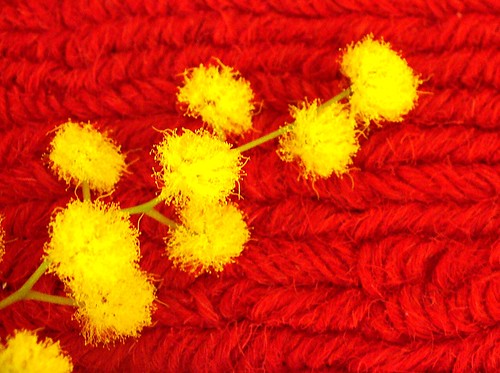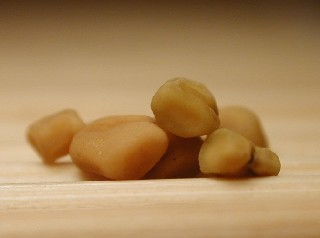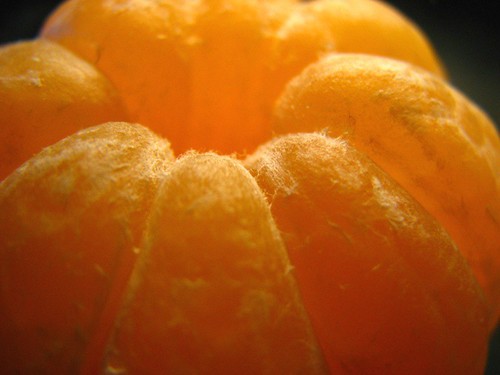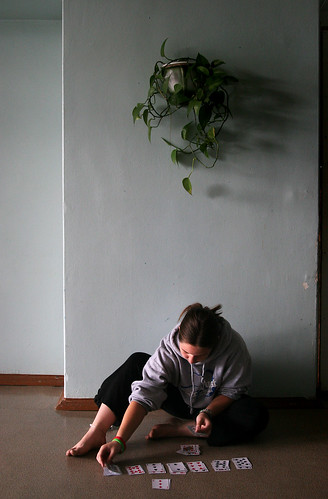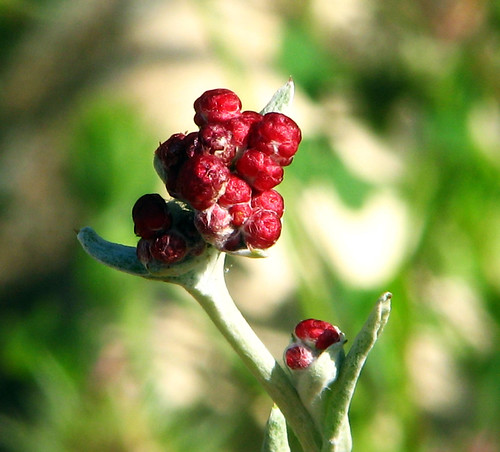couOr: Everything You Wanted to Know About Fragrance Shopping But Were Afraid To Ask...
Scents are very personal and need to be carefully selected. If you are shopping for fragrances in a department store or a perfume boutique, the environment may be overwhelmed by the many fragrances that reside under the same roof. You may get an olfactory fatigue quicker than you will in a more neutral environment such as your home.
Fragrance Counter / Department Store Survival TipsMost people buy their fragrances in the department store, drugstore or better yet – a specialty perfume boutique. If you are a fragrance connoisseur you also have the advantage of being able to buy online, as you are already familiar with many fragrances and already know your likes and dislikes.
There are many challenges for shopping for fragrance -
Preparing for your sniffing expedition:
Fragrance shopping is fun – and also dangerous: you may end up smelling like something you hate! To avoid this from happening, you must be thoroughly prepared – mentally and physically.
To be mentally prepared for your snifforama, you must know your goals and your boundaries. You may go on a fragrance sniffing expedition with a specific goal in mind, or you may find yourself in the situation out of curiosity as you just passed by a perfume boutique and followed your nose…
Either way – you still have goals, and you better make sure you achieve them before your nose gets too tired. One should master the art of not getting scent stripes shoved under your nose involuntarily or get sprayed pre-maturely with an un-godly scent.
Snifforama Goals:
Your goals can be many. Here are a few common ones:
1) Explore scents you never tried before. In fact, you may have decided to spend your whole day off doing so – it’s one of your favourite things in the world!
2) Check out specific scents (old or new) that you heard about and are very curious to sniff or try on.
3) Find a new scent for yourself.
4) Find a perfume gift for somebody.
5) Look at the beautiful perfume bottles. You may not even like perfumes, but collect flacons. 6) Buy a specific fragrance or fragrances that you have already decided on purchasing, as fast as possible before your parking meter runs out! You absolutely can’t bother smelling anything on the way!
Knowing Your Boundaries:
How willing are you to try new scents? How willing are you to get sprayed with an unknown scent, unsolicited?
Knowing your boundaries will save you a lot of trouble, as you will be prepared and willing to defend them. There is no reason why a salesperson should spray your skin with perfume unless you ask for it. So make sure you communicate well what your intentions are. It has become a common practice among perfume salespeople to offer you a scent strip instead of readily spritzing your arm with perfumes they pick for you unsolicited.
However, many salespeople still shove scent stripes under your nose (or close enough to overwhelm your olfactory pre-maturely) without your voluntary interest. It takes practice to learn how to recognize and predict those behaviours and be able to avoid smelling what you do not want to smell.
Preparing Physically:On the physical level, if you know in advance that you are going for a snifforama – the most important thing is to come to the battlefield with as much unscented skin as possible. Leave home or work unscented if you can, it will help your olfactory be a lot more receptive, not to mention that you will be able to smell for yourself the evolution of the scent on your own skin.
There are a couple of useful tools you can take with you to your sniffing expedition – also known as the
Snifforama Survival Kit:
Scent Shopping Survival Kit: 1) Pencil or pen (to write perfume names on scent stripes)
2) A woolen scarf or a sweater (to refresh your olfactory bulb and avoid fatigue) or coffee beans (these are now requently offered on most perfume counters and less convenient to carry on your own – so they are only a second choice). Note: if you have none of those – you can use the less polite method: take good sniff of your armpits to neutralize your sense of smell and refresh your olfactory.
3) Lots of bare skin if you are planning to try many different scents. Wear T shirt or a tank top on hot summer days, or layer them with a jacket that you can take off once skin testing begins!
How to overcome sales pitch and scent spray overload:
Just like anything else in life, communication is the key. If you have a very specific goal when scent-shopping, communicate it with the sales person as soon as they approach you. In other words, be assertive!
Here are a few examples (based on the goals described above):
1) Planned Snifforama: when the salesperson approaches you, explain right away that you are “looking around” and do not need help. If you are indeed spending the whole day there, don’t forget to go for lunch. It may even be a good idea to invite the salesperson to join you for lunch! Building a relationship with the salesperson will pay off – maybe next time when you visit to just sniff around you will be left alone; Your obvious eager passion about perfume may even pay off with generous samples; Or better yet – you may have just found a new friend to share your passion with – in the rare cases when the salesperson is a passionate perfumista themselves! What can be more fun than being able to discuss perfume with an intelligent and knowledgeable salesperson that can understand your fragrance whims, and wants to make you happy?
2) If you are here to check out specific fragrances, make it super clear with the salesperson. Ask them to help you find the scents. If they offer you to try a “new scent” that just came out which is not on your list, don’t be afraid to be firm and say you need to smell the others first.
3) Finding a new scent for yourself is the hardest task of all. Especially because in most cases, the salesperson does not have the adequate knowledge, training and sensitivity to be of real help. In most department stores, salespeople are pressured to promote new scents, and do not have a lot of knowledge of many of the classics or the older scents. There is also a tremendous gap in their knowledge and understanding of notes and fragrance families and fragrance categorization. Don’t be surprised to find out that you know more than the salesperson. If this is the case – you better get rid of them politely, by saying that you don’t need any help, thank you, you are just sniffing around; however, if they are indeed knowledgeable, their words will be worth their weight in gold! They will be able to introduce you to new scents that are terribly worthy of your attention, ones that are right up your alley – yet different, unusual and new to you. You better become friends with them or at least remember their name (and the names of the perfumes they offer you)!
4) If you thought finding a scent for yourself was a challenge – finding a scent for someone else is 100 times as difficult. Unless you know the person’s taste of course – or know that they run out of their favourite scent. Knowing what else they like is helpful information – names of fragrances, as well as notes or fragrance categories. You will really need help from a knowledgeable salesperson. If they only pitch new scents to you, that can be the first warning that they probably won’t be very helpful. In this case, just thank them and continue with your own guesswork. If you can get samples of scents that you suspect your friend will like, that can be very helpful. You could bring the samples back to your friend and casually introduce them and measure their reaction by facial expressions and gestures. You might even want to make a little movie about it with your camera-phone LOL...
5) If you are only here for the bottles, make it very clear, and ask about other beautiful bottles. The salesperson will most likely be happy to show them off. Make it super clear that you don’t want to try anything on if you are scent-phobic! Lots of nose-wrinkling usually does it. However, if you are shopping for FRAGRANCE based on the bottle design alone, you are setting yourself up for disappointment. Liking the bottle does not, and I repeat, does NOT guarantee loving the juice. Don't be a marketing victim ;)
6) If you are in a rush and needs to get your shopping done as fast as possible, just come in, and while heavily panting, ask for the specific sizes of the fragrances you need. Don’t even bother smiling, until they find it for you. Smiling will invite a conversation, and you don’t have time for that! Once all your scents are on the counter, thank the salesperson heavily for all their help, smile a lot and blow a kiss as you dash out the door to watch your car getting towed away...
Other things to avoid when fragrance shopping:
1) Impulse buying: in my experience, impulse buying of scents usually leads to returns. Most people need some time to get to know a fragrance – either try it several times in different situations and moods, or get a sample so they can try it on their own time. It is very unusual to purchase a scent on an impulse and not feel regret afterwards.
2) More so – resist your impulse for buying a whole set of fragrance, shower gel, body lotion etc. of a scent you have never tried before. You need to try it first and absolutely love it to justify such an investment (we are talking both money and storage space here, two very valuable resources!).
3) I highly recommend not spraying yourself on the neck (or chest) with a new scent. If the scent does not work for you, it is harder to wash it out (unless you take a shower), and being exposed to it constantly (especially if it has a very strong silage) can be unexpectedly overwhelming and even cause headache and/or nausea.
Whenever possible, get samples so that you can try the fragrances at home, whenever you feel like it! Ask the sales person if they have samples available, and if he/she offers the tester, tell him/her that you are already wearing another scent you were trying before (more than likely, this is also the truth – especially if your snifforama was a spontaneous one).
Sniffing and Scent TestingOnce you have overcome all the challenges of dealing with the salespeople, it’s time to talk about the real thing – sniffing and testing!
Sniffing Tips:1) Sniff the scents from the bottle first. Although this is not the most accurate impression of the scent (the residues of the scent that was recently sprayed may be altered due to oxidation) it is a fast and easy way to shortlist which perfumes to try first.
2) If you like the scent, spritz some on scent stripe. Wait a few seconds so that the alcohol evaporates and doest not sting your nose and tire your olfactory bulb.
3) Take short sniffs rather than deeply inhale the scent.
4) Don’t forget to write the name of the scent on the scent stripe!
5) Keep in mind that the initial impression on the scent stripe is going to fade and change.
6) Don’t forget to refresh your olfactory after sniffing 3 or 5 fragrances, or whenever you feel that you can’t smell the scents and tell them apart anymore. This can be done simply by inhaling deeply for three times through a woolen scarf or coffee beans.
Skin Test:1) Skin does not smell or behave like paper, so once you have narrowed down your list of interests for the day, try the scent on your skin.
2) If you have planned your sniffing or perfume shopping trip, it is best that you don’t wear any scent so that you have enough skin available for testing.
3) I personally prefer and recommend using the wrist for scent testing. It is warmer than other areas of your body, and far enough from your nose so that you can decide when to sniff the new scent and evaluate it throughout its different evolutionary stages.
4) A second choice for testing scent is the bent of your elbow. It is also a warm area on your skin and easily sniffable. The other great advantage of wearing scents behind the elbow is that it will not be affected by the scents of your soap when you wash your hands.
5) I highly recommend trying on one scent at a time. It is easier to experience a scent on its own to truly understand how it affects you, including the mood it inspires in you. If you try two scents at once you may have more challenge determining which scent is responsible for the effect (positive or negative).
6) Testing more than one scent at a time: If you are an adept at testing scents and find it easy to concentrate on one scent or the other, you can use different areas of your skin for scent testing. Just try to remember (or jot down) the names of the fragrances and where you have applied them. Areas that are easy to distinguish from one another are the wrists (use a different scent for each) and underneath the elbows. Both areas are pulse points and are ideal for fragrance development on the skin. You can use other areas of your bare skin, but this may be very confusing as the scents will blend into each other in the air as you sniff them.
Sampling Tips:The following tips will help you experience the scent to its fullest, and be able to decide which scent you like the most. Although these tips were written especially about Ayala Moriel’s samples, most of them apply to any samples you may have had the chance to procure on your fragrance expeditions.
 1. To avoid olfactory fatigue: Smell only up to 5 samples at a time. You may want to inhale fresh coffee beans between sampling the fragrances, to refresh your olfactory alertness
1. To avoid olfactory fatigue: Smell only up to 5 samples at a time. You may want to inhale fresh coffee beans between sampling the fragrances, to refresh your olfactory alertness 2. Smell the perfumes from the vial first, to get your first impression. Keep in mind that the initial impression will fade quickly as the perfume interacts with your skin. Take short, quick sniffs rather than deeply inhale the scent.
2. Smell the perfumes from the vial first, to get your first impression. Keep in mind that the initial impression will fade quickly as the perfume interacts with your skin. Take short, quick sniffs rather than deeply inhale the scent. 3. Using scent stripes or cards: you can apply a drop of perfume on a scent stripe, and note the different dry out stages, and compare the different scents. However, this will not tell you how the perfume will smell on your skin, just how it smells on paper.
3. Using scent stripes or cards: you can apply a drop of perfume on a scent stripe, and note the different dry out stages, and compare the different scents. However, this will not tell you how the perfume will smell on your skin, just how it smells on paper. 4. Apply a small amount of the desired perfume on the pulse points of your clean wrists (i.e. not previously scented). Let the scent develop on your skin for several hours. This way you will experience the dry out phase, and learn how the perfume interacts with your own personal body chemistry.
4. Apply a small amount of the desired perfume on the pulse points of your clean wrists (i.e. not previously scented). Let the scent develop on your skin for several hours. This way you will experience the dry out phase, and learn how the perfume interacts with your own personal body chemistry. 5. It is recommended that you wear only one perfume at a time on both wrists. This way you will experience the fragrance better.
5. It is recommended that you wear only one perfume at a time on both wrists. This way you will experience the fragrance better. 6. Caution: Avoid contact with eyes. Keep out of the reach of children and pets. Wear on pulse points behind ears and on wrists, and avoid wearing on areas that are exposed to the sun. Keep samples away from heat and sunlight. If you develop any allergic reactions, stop using the product immediately.
6. Caution: Avoid contact with eyes. Keep out of the reach of children and pets. Wear on pulse points behind ears and on wrists, and avoid wearing on areas that are exposed to the sun. Keep samples away from heat and sunlight. If you develop any allergic reactions, stop using the product immediately.
Matching Scents to Moods and OccasionsJust as personal as fragrance is, deciding when to wear what is an extremely personal thing. Don’t be surprised to discover that you like wearing some “winter” perfumes in the summer and “daytime” perfumes in the evening. I personally believe that you should wear whatever scent you want whenever you want. It is your own internal associations with a fragrance that will make it more suitable for this occasion or the other. Not what other people think is “correct” or appropriate.
However, the traditional and widely accepted guidelines for matching scents to occasions, moods and seasons does make sense on many levels – psychological, physical and social.
Here are the most common guidelines that are widely accepted in our culture in regards to when and where to wear perfumes:
Oriental scents are best suited for evening and cooler seasons. Orientals are considered more seductive and sensual – therefore more appropriate for romantic occasions (such as going out in the evening). Also, because they are heavy, if worn in hot weather, they will become overwhelming. Heat releases scent and diffuses it better – so if you wear a very heavy scent in warm weather, it could be quite overwhelming. Also, heavier scents may have a narcotic or sedative effect on the mind, an effect that may be found counter-productive if you need to work hard and concentrate during the day. If you hold a full time position as a daydreamer this may not be relevant to you.
Light florals and citrus scents are best suited for daytime and hot weather. This is because lighter scents are perceived as more “clean and polite” and therefore better for the work

environment (or when you are more physically active – for most people this is during the day). The refreshing, energizing and rejuvenating qualities of many citrus scents make them ideal for hot weather, to balance the tendency to slow down and decrease blood pressure.
Chypre scents, which combine fresh citrus top notes and a mossy, earthy base, are an interesting example for scents that are appropriate for all occasions. They are widely accepted in the professional world because they are classy and refined, and never quite overwhelming. On the other hand, they are sensual and can be enjoyed as pure seduction on more personal and romantic occasions. They are warm enough to be worn in the winter, but also refreshing for the summer.
That being said, it is the personal associations and meanings that we relate to the scents that make them appropriate for certain occasion, season or mood.
I first tried Samsara by Guerlain in the summer. A floriental composition made of plenty of sandalwood (over 30%) along with jasmine, ylang ylang, vanilla, amber, bergamot, peach and tonka bean – this is not quite what you would call a typical summer perfume. Yet, the sensuality of the jasmine and the sweetness of vanilla were balanced beautifully with the sandalwood base which is slightly dry – and created a lovely and refreshing summer perfume. Whenever I smell Samsara, I remember that summer.
On the other hand, Creed’s Spring Flower – which is considered a harmless daytime fruity floral is a scent I worn mostly on special romantic dates. Although it is lovely as a daytime scent, whenever I smell it I remember those precious moments with my loved one, and its cheerful and crisp floral bouquet makes me feel happy in an instant.
To sum things up, there is no right or wrong when picking a fragrance. It may take you time to get to know your preferences, and decide when is best to wear your favourite scents. It will take some time to build your own vocabulary and understand what the different scents mean for you. Trust your intuition and follow your emotions for a rich and fulfilling scentual life.
The following are general ideas and recommendations for how to match scents to a mood, occasion or season:
Autumn Chypre, OrientalWinter Oriental, GourmandSpring Soliflore, Fruity Floral, Green Floral, Chypre GreenSummer Citrus, Floral Fresh, Chypre Fresh, Fougere Fresh, Citrus Green, LavenderDaytime Citrus, Fougere, Floral Fresh,Evening Oriental, Gourmand, Chypre Animalic Floral, Leathery, Fougere AmberyProfessional Chypre, Fougere FreshSport/Recreation Citrus, AquaticCasual Gourmand, CitrusRomantic Floral, Oriental, Chypre Leather, Chypre Fruity, Fougere AmberyFormal/Elegant Chypre Green, Floral Green, WoodyRejuvenating Citrus, Green FloralSoothing/Comforting/Reassuring Gourmand, Chypre, Ambery Oriental, LavenderSeductive Oriental, Chypre Animalic Floral, Chypre Leathery, Chypre Fruity, Musky and Ambery notesPlayful Floral Green, Floral Fruity
P.s. At Ayala Moriel Parfums we also give Fragrance Consultations and Perfume Advice. Check out our new website, coming up late this summer, with our revolutionary, exclusive feature: FRAGRANCE CONSULTANT ON-LINE!
*For more information, email Ayala@Quinta-Essentia.ca
Labels: Fragrance Consultant, Fragrance Shopping, Perfume Advice

 The packaging is simple and exquisite, the exact colours of Youth Dew Bath Oil. The apple did not fall far from the tree in this case…
The packaging is simple and exquisite, the exact colours of Youth Dew Bath Oil. The apple did not fall far from the tree in this case…

